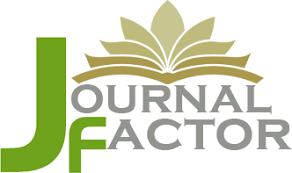Effect of the selective protein kinase C inhibitor, Ro-31-8220, on chemokine-induced Leukocyte recruitment in vivo
DOI:
https://doi.org/10.54361/ljmr.v14i2.08Keywords:
inflammation, leukocytes, neutrophils, PKC, Ro-31-8220, peritonitis, CXCL1/KC chemokineAbstract
The most critical and most important event in acute inflammation is the migration of neutrophils and other inflammatory cells from blood to the site of injury, immune response or infection. Leukocyte recruitment occurs in response to pro-inflammatory mediators such as cytokines and interleukins which are produced at the site of inflammation. Protein kinase C (PKC) is a family of kinases that are involved in the pathophysiology of a variety of inflammatory diseases or disorders such as arthritis, asthma and myocarditis. The effect of Ro-31-8220, the selective PKC inhibitor, on leukocyte transmigration in various inflammatory models is still incompletely understood. The present study explored the effect of the selective and pan inhibitor of PKC, Ro-31-8220, on CXCL1/KC induced leukocyte recruitment especially neutrophils in acute peritonitis model in mice. Ro-31-8220 treatment significantly attenuated the emigration of leukocytes predominately neutrophils in response to CXCL1/KC chemokine. Thereby, Ro-31-8220 treatment ameliorated CXCL1/KC induced acute peritonitis by interfering with emigration of leukocytes. Collectively, our study demonstrates that pharmacological inhibition of PKC in general, may provide the basic key of therapeutic strategy for many inflammatory diseases or immune linked disorders in which PKC was implicated
Downloads
References
- Bertram A., Zhang H., Vietinghoff S.V., Pablo C.D. ,Haller H., Shushakova N. and Ley K. (2012) Protein Kinase C-ϴ Is Required for Murine Neutrophil Recruitment and Adhesion Strengthening under Flow.J Immunol 188, 4043-4051.
- Craciun F.L., Schuller E.R. and Remick D.G. (2010) Early Enhanced Local Neutrophil Recruitment in Peritonitis Induced Sepsis Improves Bacterial Clearance and Survival. J Immunol 185, 6930–6938.
- Khan F.A. and Khan M.F. (2010) Inflammation and acute phase response. Int. J. of Appl. Biol. and Pharm. Techn. 1, 312-321.
- Deitch E.A. (1992) Multiple organ failure. Pathophysiology and potential future therapy. Ann Surg. 216, 117-34.
- Feng D., Nagy J.A., Pyne K., Dvorak H.F. and Dvorak A.M. (1998) Neutrophils emigrate from venules by a transendothelial cell pathway in response to FMLP. J Exp Med. 187, 903-15.
- Grant L. (1973) The sticking and emigration of white blood cells in inflammation. In The Inflammatory Process. Academic Press, New York 2, 205–249.
- Hurley J. (1983) Acute Inflammation. Churchill Livingstone, Edinburgh. 2nd edition, 1-157.
- Faurschou M. and Borregaard N. (2003) Neutrophil granules and secretory vesicles in inflammation. Microbes and Infection 5, 1317–1327.
- Katanaev V. L. (2001) Signal Transduction in Neutrophil Chemotaxis.
Biochemistry (Mosc) 66, 351 -368.
- Kolaczkowska E. and Kubes P. (2013)Neutrophil recruitment and function in health and inflammation. Nat Rev Immunol. 13, 159-175.
- Dekker L.V. and Parker P.J. (1997) PKC isozymes and myeloid cell differentiation. In: Parker, P.J., Dekker, L.V. (Eds.), Protein Kinase C. R.G. Austin, Texas, USA, pp. 121–129.
- Fabbro D., Buchdunger E., Wood J., Mestan J., Hofmann F., Ferrari S., Mett H., O'Reilly T. and Meyer T. (1999) Inhibitors of protein kinases: CGP 41251, a protein kinase inhibitor with potential as an anticancer agent.Pharmacol. Ther. 82, 293–301.
- Gray R.D., Lucas C.D., Mac Kellar A., Li F., Hiersemenzel K., Haslett C., Davidson D.J. and Rossi A.G. (2013) Activation of conventional protein kinase C (PKC) is critical in the generation of human neutrophil extracellular traps. J Inflamm (Lond). 10, 1-8.
- Way K.J., Chou E. and King G.L. (2000) Identification of PKC-isoform-specific biological actions using pharmacological approaches. Trends Pharmacol Sci.
, 181–187.
- . Roffey J., Rosse C., Linch M., Hibbert A., McDonald N.Q. and Parker P.J. (2009) Protein kinase C intervention: the state of play. CurrOpin Cell Biol. 21, 268–279.
- Steinberg S.F. (2008) Structural basis of protein kinase C isoform function. Physiol Rev. 88,1341–1378.
- Keenan C. and Kelleher D. (1998) Protein kinase C and the cytoskeleton. Cell Signal. 10, 225‐232.
- Sun J., Ramnath R.D., Tamizhselvi R. and Bhatia M. (2009) Role of protein kinase C and phosphoinositide 3-kinase-Akt in substance P-induced proinflammatory pathways in mouse macrophages. FASEB J. 23, 997-1010.
- Parekh D.B., Ziegler W. and Parker P.J. (2000) Multiple pathways control protein kinase C phosphorylation. EMBO J.19,496–503.
- Ramnath R.D., Sun J., Adhikari S., Zhi L. and Bhatia M. (2008) Role of PKC-delta on substance P-induced chemokinesynthesis in pancreatic acinar cells. Am. J. Physiol. Cell Physiol. 294,C683–C692.
- Karimi K., Kool M., Nijkamp F.P. and Redegeld F.A. (2004) Substance P can stimulate prostaglandin D2 and leukotriene C4 generation without granule exocytosis in murine mast cells. Eur.J. Pharmacol.489,49–54.
- Konopatskaya O. and Poole A.W. (2010) Protein kinase C alpha: disease regulator and therapeutic target. Trends Pharmacol Sci. 31, 8–14.
- Meier M., Menne J. and Haller H. (2009) Targeting the protein kinase C family in the diabetic kidney: lessons from analysis of mutant mice. Diabetologia. 52, 765–775.
- Salamanca D.A. and Khalil R.A. (2005) Protein kinase C isoforms as specific targets for modulation of vascular smooth muscle function in hypertension. Biochem Pharmacol. 70,1537–1547.
- Chaudhary D. and Kasaian M. (2006) PKC theta: a potential therapeutic target for T-cell-mediated diseases. Curr Opin Investig Drugs 7, 432–437.
- Balasubramanian N., Advani S.H. and Zingde S.M. (2002) Protein kinase C isoforms in normal and leukemic neutrophils: altered levels in leukemic neutrophils and changes during myeloid maturation in chronic myeloid leukemia. Leuk Res. 26, 67‐81.
- Hambleton M., Hahn H., Pleger S.T., Kuhn M.C., Klevitsky R., CarrA.N. and Molkentin J. D. (2006). Pharmacological- and gene therapy-based inhibition of protein kinase C alpha/beta enhances cardiac contractility and attenuates heart failure. Circulation 114, 574-582.
- Cara D.C., Kaur J., Forster M., McCafferty D.M. and Kubes P. (2001) Role of p38 mitogen-activated protein kinase in chemokine induced emigration and chemotaxis in vivo. J Immunol. 167, 6552–6558.
- . Bozic C.R., Kolakowski L.F., Gerard N.P., Garcia-Rodriguez C., Uexkull-Guldenband C., Conklyn M.J., Breslow R., Showell H. J., and Gerard C. (1995) Expression and biologic characterization of the murine chemokine KC. J. Immunol. 154,6048-57.
- Liu L., Cara D.C., Kaur J., Raharjo E., Mullaly S.C., Jongstra-Bilen J., Jongstra J. and Kubes P. (2005) LSP1 is an endothelial gatekeeper of leukocyte transendothelial migration. J Exp Med. 201, 409-18.
- Chou W.H., Choi D.S., Zhang H., Mu D., McMahon T., Kharazia V.N., Lowell C.A., Ferriero D.M. and Messing R.O. (2004) Neutrophil protein kinase C delta as a mediator of stroke-reperfusion injury. J Clin Invest. 114, 49–56.
- Jančinová V., Perečko T., Nosáľ R., Harmatha J., Smidrkal J. and Drábiková K. (2012) The natural stilbenoidpinosylvin and activated neutrophils: effects on oxidative burst, protein kinase C, apoptosis and efficiency in adjuvant arthritis.ActaPharmacol Sin. 33, 1285–92.
- Kim H., Zamel R., Bai X-H. and Liu M. (2013) PKC Activation Induces Inflammatory Response and Cell Death in Human Bronchial Epithelial Cells.PLoS ONE 8, 1-12. e64182.
- Mondrinos M.J., Kennedy P.A., Lyons M., Deutschman C.S. and Kilpatrick L.E. (2013) Protein Kinase C and Acute Respiratory Distress Syndrome.
J Shock 39, 467-479.
- Wolfson M., McPhail L.C., Nasrallah V.N. and Snyderman R. (1985) Phorbolmyristate acetate mediates redistribution of protein kinase C in human neutrophils: potential role in the activation of the respiratory burst enzyme. J Immunol. 135, 2057-62.
- Mulqueen M.J., Bradshaw D., Davis P.D., Elliott L., Griffiths T.A., Hill C.H., Kumar H., Lawton G., Nixon J.S., Sedgwick A.D., et al.(1992) Oral, anti-inflammatory activity of a potent, selective, protein kinase C inhibitor. Agents Actions 37, 85–89.
- Mckenna J.P. and Hanson P.J. (1993) Inhibition by Ro31-8220 of Acid Secretory Activity Induced by Carbachol Indicates a Stimulatory Role for Protein Kinase C in the Action of Muscarinic Agonists on Isolated Rat Parietal Cells. Biochemical Pharmacology. 46, 583-588.
- Wilkinson S.E., Parker P.J. and Nixon J.S. (1993) Isoenzyme specificity of bisindolylmaleimides, selective inhibitors of protein kinase C. Biochem. J. 294, 335-337.
- Metzemaekers M., Gouwy M. and Proost P. (2020) Neutrophil chemoattractant receptors in health and disease: double-edged swords. Cell Mol. Immunol. J. 17, 433–450.
- Auvynet C., Moreno S., Melchy E., Coronado-Martínez I., Montiel J.L., Aguilar-Delfin I., Rosenstein Y.(2013)Galectin-1 promotes human neutrophil migration. Glycobiology J. 23,32-42.
- Heiskanen K.M. and Savolainen K.M. (1997)Palmitic acid anilide-induced respiratory burst in human polymorphonuclear leukocytes is inhibited by a protein kinase C inhibitor, Ro 31-8220. Free RadicBiol Med. J. 22,1175-82.
- Berger C., Rossaint J., Van Aken H., Westphal M., Hahnenkamp K. and Zarbock A.(2014) Lidocaine reduces neutrophil recruitment by abolishing chemokine-induced arrest and transendothelial migration in septic patients. J Immunol. 192, 367-76.
Downloads
Published
Issue
Section
License
Copyright (c) 2020 Entesar A. A. Omran, Zinab Y. K. Elfituri, Amina M. Bshaena, Abdalhalim M. A. Suaiee (Author)

This work is licensed under a Creative Commons Attribution-NonCommercial-NoDerivatives 4.0 International License.
Open Access Policy
Libyan journal of medical Research (LJMR).is an open journal, therefore there are no fees required for downloading any publication from the journal website by authors, readers, and institution.
The journal applies the license of CC BY (a Creative Commons Attribution 4.0 International license). This license allows authors to keep ownership f the copyright of their papers. But this license permits any user to download , print out, extract, reuse, archive, and distribute the article, so long as appropriate credit is given to the authors and the source of the work.
The license ensures that the article will be available as widely as possible and that the article can be included in any scientific archive.
Editorial Policy
The publication of an article in a peer reviewed journal is an essential model for Libyan journal of medical Research (LJMR). It is necessary to agree upon standards of expected ethical behavior for all parties involved in the act of publishing: the author, the journal editorial, the peer reviewer and the publisher.
Any manuscript or substantial parts of it, submitted to the journal must not be under consideration by any other journal. In general, the manuscript should not have already been published in any journal or other citable form, although it may have been deposited on a preprint server. Authors are required to ensure that no material submitted as part of a manuscript infringes existing copyrights, or the rights of a third party.
Authorship Policy
The manuscript authorship should be limited to those who have made a significant contribution and intellectual input to the research submitted to the journal, including design, performance, interpretation of the reported study, and writing the manuscript. All those who have made significant contributions should be listed as co-authors.
Others who have participated in certain substantive aspects of the manuscript but without intellectual input should only be recognized in the acknowledgements section of the manuscript. Also, one of the authors should be selected as the corresponding author to communicate with the journal and approve the final version of the manuscript for publication in the LJMR.
Peer-review Policy
- All the manuscripts submitted to LJMR will be subjected to the double-blinded peer-review process;
- The manuscript will be reviewed by two suitable experts in the respective subject area.
- Reports of all the reviewers will be considered while deciding on acceptance/revision or rejection of a manuscript.
- Editor-In-Chief will make the final decision, based on the reviewer’s comments.
- Editor-In-Chief can ask one or more advisory board members for their suggestions upon a manuscript, before making the final decision.
- Associate editor and review editors provide administrative support to maintain the integrity of the peer-review process.
- In case, authors challenge the editor’s negative decision with suitable arguments, the manuscript can be sent to one more reviewer and the final decision will be made based upon his recommendations.











